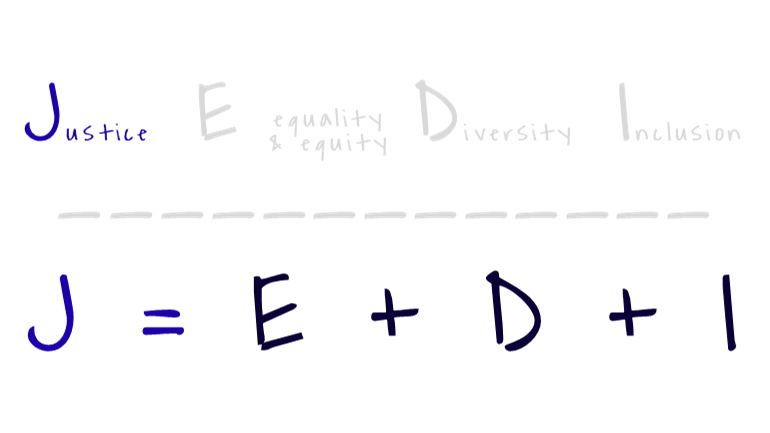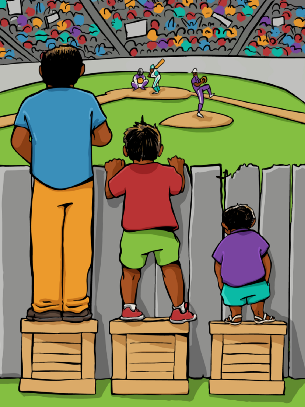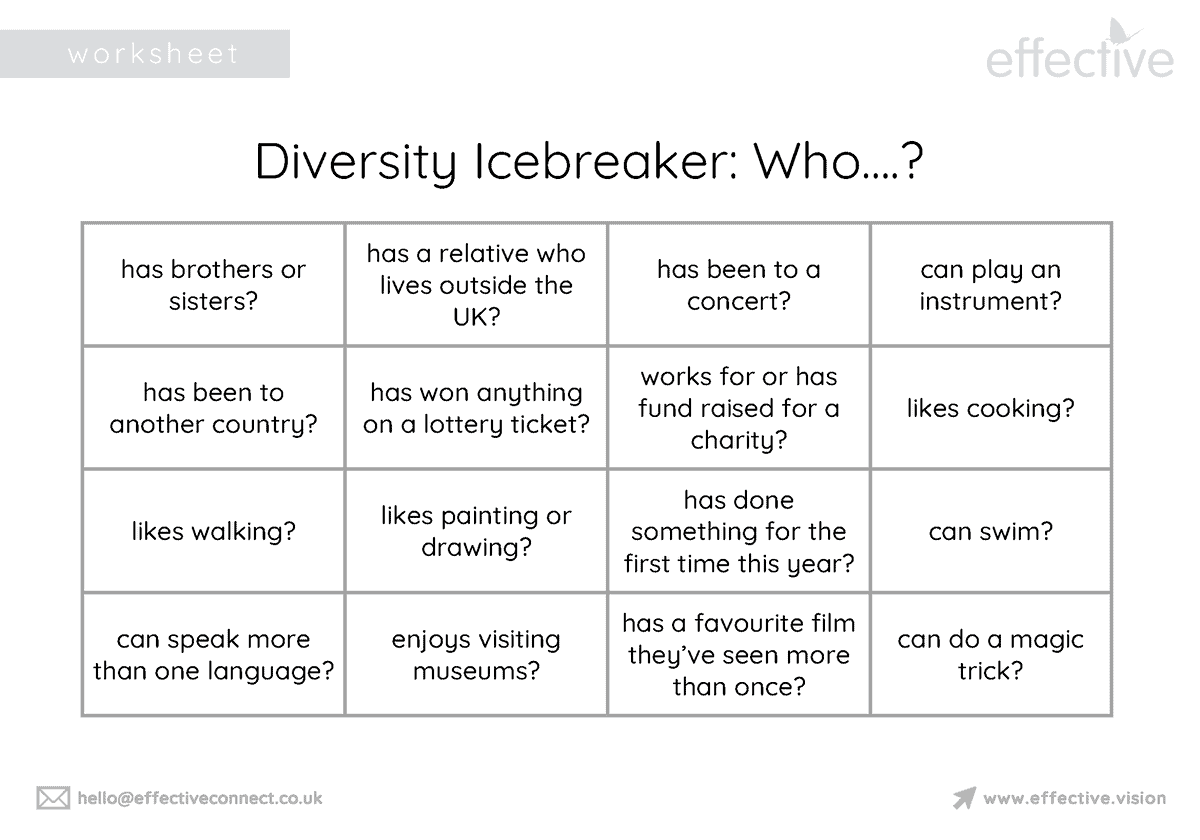
audio
Justice is usually defined as moral correctness – of being just. This is essentially a subjective concept – we each may have our own definitions and interpretations of what is just. In her TED talk Juliana Duron offers four ways of defining justice: 1) people getting what they deserve; 2) carrying out the law; 3) ensuring fair treatment and behaviour; 4) the potential to fix what is broken – to redress the imbalances in society.
Which of these 4 definitions most resonates for you – and why? Or do you have your own definition of justice?
For many people, as the illustration implies, justice is an outcome of the other three elements of JEDI: a just society is one that values and promotes equality and equity, diversity and inclusion.
Justice

audio
Equality is usually defined as “the state of being equal, in terms of status, rights, and opportunities” (OED)
At this point it is worth distinguishing between equality, as defined just now, and equity. Equity is about providing resources (in the widest use of that word) unequally, to as it were level up the playing field.
The two images alongside show the difference clearly. In the first, the point being made is that if you provide equal resources (the same size box) where there is already inequality, it simply reinforces that inequality – and perhaps provides an equal resource that some, who are already advantaged in some way, do not need.
The second image shows equity: providing different levels of resource to help counter existing imbalances, so that the result, rather than the provision, is more equal. So for equity, everyone should not be treated the same, but according to their particular need.
Equality & Equity
Equality

meaning
equal provision for all
action
all get the same number/height of box
outcome
different viewing heights remain, shorter person still can’t see well
Equity

meaning
equal outcome for all
action
all get different, appropriate number/height of box
outcome
equal viewing height, can all see equally well
audio
In the simplest terms, diversity means variety. The more diverse an organisation or community is, the more variety it will have. It’s important to remember that diversity is not always visible or external. So another, even broader, definition might be “any observed or expressed difference”. So people who are not diverse in an obvious, visible characteristic – for example race, gender, age – might nonetheless have diverse interests, priorities, beliefs, and attitudes. To put it simply, we are all different. And one way you could support diversity is to remember that in any conversation or debate where there is disagreement, it may not be a case of ‘who’s right or who’s wrong’, but that we are all different. Another useful associated phrase is ‘don’t make people wrong: accept the difference’… The extent to which any organisation wishes to address and support diversity is partly shaped by how widely they draw their definition of diversity. Generally speaking, however, commitments made to value diversity are driven by a sense of unfairness or unhelpful treatment of particular groups. This is the primary basis of the ‘protected status’ legislation enshrined in the Equality Act of 2010, where 9 specific groups or categories must not be discriminated against.
audio
Inclusion can be defined as creating conditions where those involved or affected feel a sense of worth, being valued, and belonging. The idea of inclusion as a policy is that society, and organisations, have to take action to ensure inclusion or inclusivity. This is because, left alone, society and organisations may consciously or unconsciously exclude. For example, it will allow people to automatically and unconsciously segregate. In training settings, people often sit ‘like with like’ and it is part of my job to mix these groups up, to increase opportunities for inclusivity. So for some societies and organisations, the default setting is to exclude, rather than include. So inclusion ought to be an active, rather than passive, commitment. And to be truly inclusive, actions must actively seek and encourage a genuine sense of inclusion, by being active towards inclusion. Deeds, not words are required. Finally a successfully inclusive society or organisation will not just provide opportunities for inclusion, but will create an outcome in which everyone in that society or organisation feels a genuine and positive sense of belonging. So to be successful, inclusion is not just a principle, it is an action; and it is not just an action, but an outcome.
Inclusion



